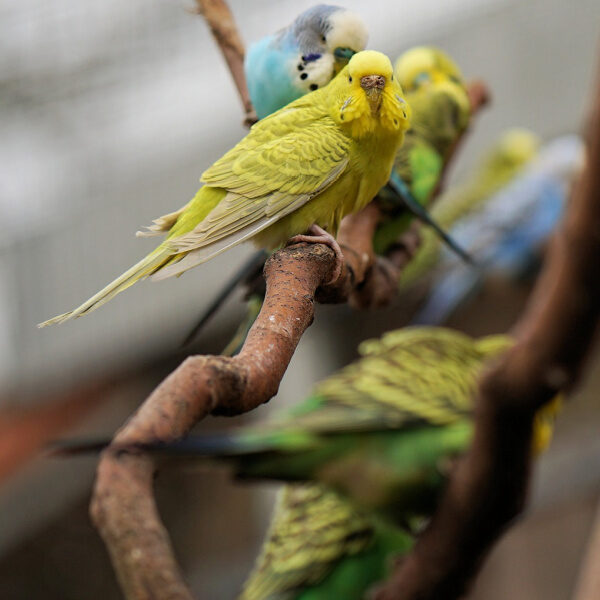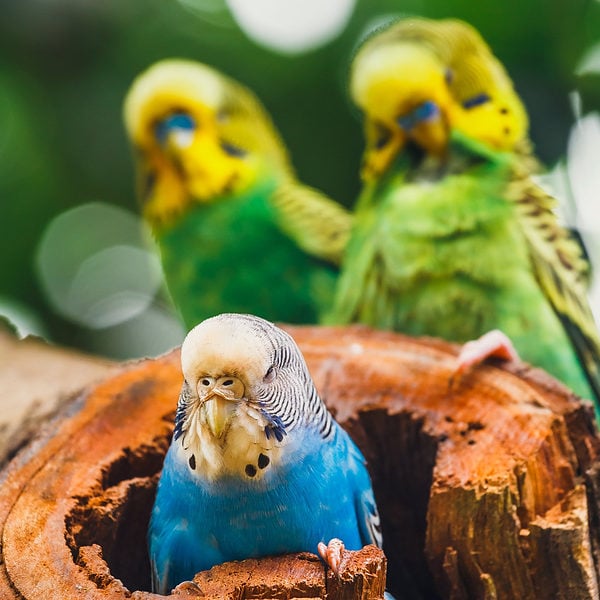Last Updated on by Mitch Rezman
I own a green cheek conure. He has a pretty large cage, not sure of the exact dimensions, but I’m very confused on how to set it up, I hear that people put newspaper to line the cage with but are you supposed to put that on top of the litter or under it? Also, how often should I change the litter?
Hi John
We remove the grate in our cages and only use newspaper we can easily refresh daily. We don’t like “litters” as they promote mold growth possibly leading to aspergillosis plus it hides poop which is essential to inspect on a daily basis.
Birds get Aspergillosis by exposure to fungi of the genus Aspergillus. The fungus itself doesn’t cause the disease but the illness can be triggered by a weak immune system. Yes, humans can get Aspergillus.
At the very least 3 types of perches – grooming, wood, and rope should be in your bird’s cage. A rope perch should be installed close to the top of the cage for the bird to sleep on preventing arthritic feet. The grooming perch should be installed by the food dish as the bird is active while eating and will groom toenails and beaks on it.
Remove the long perch that came with the cage and replace it with something like a manzanita (wood) perch having uneven surfaces challenging the bird’s feet.
We like thermal perches for all our birds so we heat the bird, not the home. Cuttlebone is really only necessary for females and although it helps beaks there are better beak conditioners like lava rock.
Most importantly a full spectrum light 6 inches above the cage on a timer. 12 hours on 12 hours off with no respect for daylight savings time. This helps keep the bird’s circadian rhythms in tune and will reduce hormonal behavior.
Why is your bird’s sex is important to know? Breeding activity in hens coupled with a molt can be a big drain of caloric resources and nutrition should be adjusted during these stressful periods as a major reason. Knowing how to deal with aggressive males is another.
Use the smooth dowel rod that came with the cage for “stick training” Make sure it is your bird’s “friend” so other people can handle the bird if you’re not around and something you can use to fish the bird out from behind a dresser or refrigerator.
Think of toys as the “leaves of the trees” your GCC would be living in the wild. You want wood, shredding, and at least an interactive toy all in the upper 1/3 of the cage.
Toys should be placed around the perimeter of the cage for easy accessibility also to provide privacy for the bird. Include at least one swing that doesn’t bang any other accessories. The cage in the video above needs at least 10 more toys in the upper third portion.
I clean our 2 birdcages every 24 to 48 hours that way it doesn’t become a big mess nor a huge chore here’s how
Written by Mitch Rezman
Approved by Catherine Tobsing
your zygodactyl footnote
Author Profile
Latest entries
 The Traveling BirdJune 26, 2025Can You Name 5 Parrot Species That Are Living Wild in the USA?
The Traveling BirdJune 26, 2025Can You Name 5 Parrot Species That Are Living Wild in the USA? Bird BehaviorJune 26, 2025How is it Parrots Are Problem Solvers Social Animals and Even Use Tools?
Bird BehaviorJune 26, 2025How is it Parrots Are Problem Solvers Social Animals and Even Use Tools? Bird & Parrot AnatomyJune 25, 2025How a Tiny Chemical Modification Makes Parrots Nature’s Living Paintings
Bird & Parrot AnatomyJune 25, 2025How a Tiny Chemical Modification Makes Parrots Nature’s Living Paintings PigeonsJune 20, 2025How Do Parrots Thrive in Cities Outside Their Native Habitats?
PigeonsJune 20, 2025How Do Parrots Thrive in Cities Outside Their Native Habitats?




